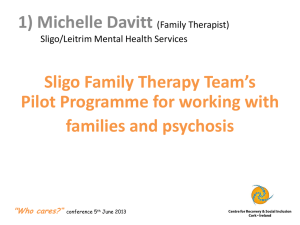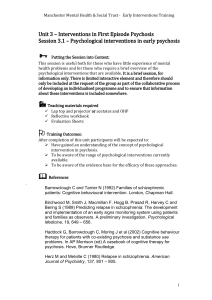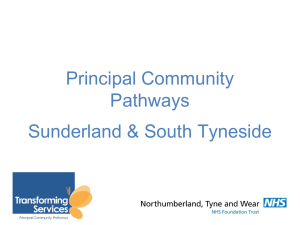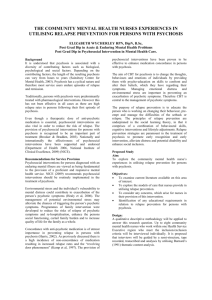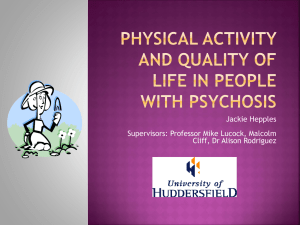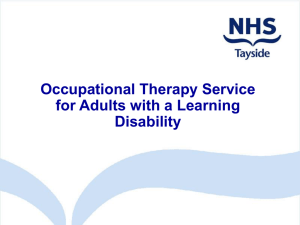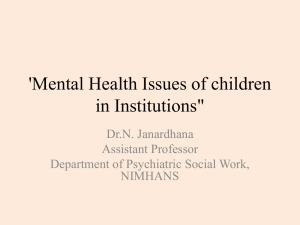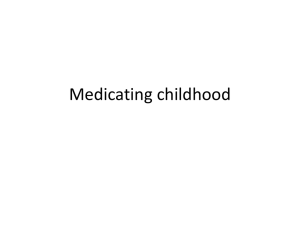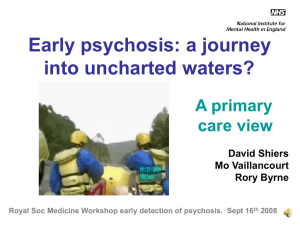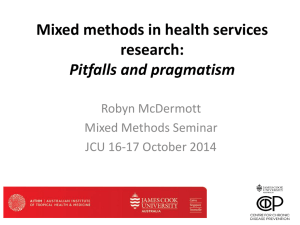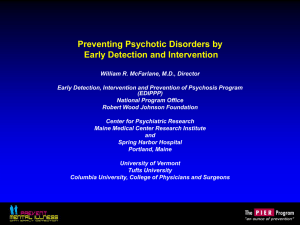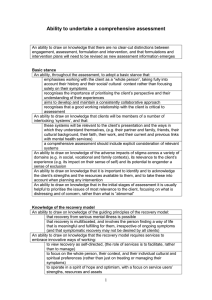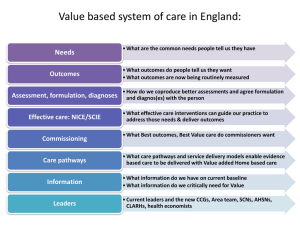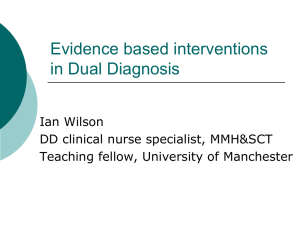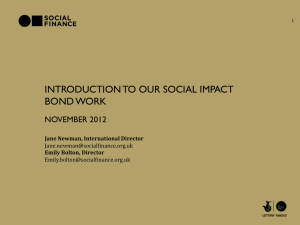View this presentation. - National Association of State Mental Health
advertisement
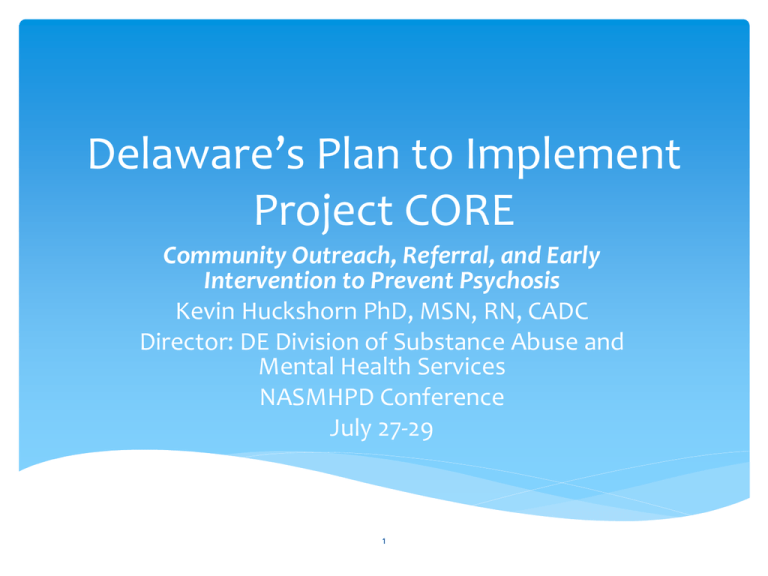
Delaware’s Plan to Implement Project CORE Community Outreach, Referral, and Early Intervention to Prevent Psychosis Kevin Huckshorn PhD, MSN, RN, CADC Director: DE Division of Substance Abuse and Mental Health Services NASMHPD Conference July 27-29 1 CORE Project Goals 1. Improve Long-Term Outcomes for 16-25 yr. old Delawareans that are at high risk for psychotic disorders or have experienced a first episode in the last year. 2. We plan to use a mix of RAISE and PIER models to address these issues, using Federal Dollars to address first episode psychosis in 16-25 yr. olds, as well as, using state General Funds to pay for services targeted to the 12-15 yr. old population that is exhibiting prodromal symptoms. 3. Increase public awareness of these issues, in young adults, including information saturation on how to refer for care. 2 CORE Project Goals 4. Establish a network of current providers and stakeholders to help identify, engage and refer high risk youth. 5. Establish personal contacts for all referrals within 48 hours of referral. 6. Deliver evidence-based assessments for all referrals within one week. 7. Provide treatment to those youth that meet criteria for interventions. 8. Evaluate the effectiveness of these interventions and the outcomes of these interventions. 3 CORE Project Delaware has partnered with the DE Kids Department to respond to both the 5% BG Set Aside, as well as, the SAMHSA RFA on this same project. We were not aware for some time of the potential restrictions regarding the target population or the restrictions regarding interventions for youth with “prodromal symptoms.” We believe that both youth, with first episodes, and youth with prodromal symptoms should be engaged in care/treatment. As such we have figured out a way to use GF to pay for the younger, latter population and track that work separately. 4 CORE Project Goals DE expects to be able to achieve our goals in less than five years. We are small and only have 3 counties in which to implement this work. Phase One will include the northern most county, New Castle, that holds about half of DE’s population. Phase Two will broaden these efforts to include the two southern counties who, together, have population numbers that match NC but that are much more rural. In Phase Two, we anticipate starting in the southernmost county and then moving to Kent County with a shared intervention team. 5 CORE Project Measureable Outcomes 1. Statewide policy changes in DSAMH and the Kids Dept. including MOU. 2. Stakeholder organizations entering into performance based agreements with DSAMH and Kids. 3. Number of youth and families referred, 4. Number of youth and families engaged, 5. Treatment retention with a goal of 2 years, 6. Conversion rates of psychosis in at risk youth, 7. Formalization of training and intervention documents and curricula, 8. Number of high risk youth that do not convert to psychosis 6 DE CORE Project Five Year Work Proposal We expect to Refer over 692 transitional age youth/families for assessment, We expect to Assess 198 youth/families for services, And we expect to Treat 155+ youth/families for engagement into these services. DE is the perfect statewide microscope to see how these interventions work in a state that is urban, suburban and rural. The current USDOJ Settlement Agreement also supports this work. 7 CORE Project Challenges DE is one of only four states in the US that maintain separate mental health systems of care for children and adults. There are advantages and disadvantages to this model. The most troubling is the interruption in care for a youth and their family when they turn 18. Another issue is the fact that the adult MH system in DE is not prepared to accept young people age 18-25 as the population we serve are mostly older and young people do not find our services age appropriate. As such, many of these youth disappear at 18, only to resurface, often much more ill, at age 23-25. 8 CORE Project The DE Adult and Kids System’s hope that this project will draw together these gaps in service and encourage a better partnership going forward and targeting youth age 16-20 to stay in care. This project will use two Family ACT teams to provide the assessment and interventions required under the RAISE and PIER Program models. DE DSAMH and Kids plan to spend a great deal of time in training our communities, including parents, on signs and symptoms. We have also partnered with DE NAMI and DE MHA in this proposed work. 9 Early Detection, Screening and Intervention to Prevent Psychosis Regardless of the bureaucratic challenges the fact remains that the ten years of work done, by RAISE and PIER, have clearly demonstrated some really exciting outcomes. OUTCOMES THAT WE CANNOT IGNORE… I personally believe that every state needs to get informed on these interventions and implement these strategies ASAP. Even one successful intervention that prevents psychosis is worth an estimated 10 million dollars. (McFarlane, 2014). 10 CONTACT INFO Kevin Ann Huckshorn PhD, MSN, RN, CADC Kevin.Huckshorn@state.de.us 302-255-9398 11


